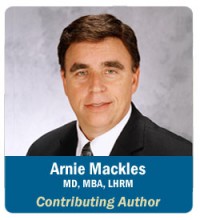 [6 MIN READ]
[6 MIN READ]
Physicians, nurses and other “healers” have had special relationships with patients for centuries. This unique bond between those who provide medical treatment and those who receive their care is currently being endangered by a massive and impersonal healthcare delivery system that is becoming more dependent on automation and technology with each passing year. The good news is that patient attitudes, impressions, and subsequent compliance with treatment plans can be positively influenced when healthcare professionals improve their communication skills with their patients.
Studies show that there is a clear relationship between high patient satisfaction and healthcare organizations that provide safe, quality care. A report by Health Grades (May 2012) noted that hospitals that were ranked (by patients) in the top percentages for nursing and physician communication had lower rates of adverse patient safety events. For example, bed sores occurred approximately 46% more frequently in hospitals that patients had ranked in the lowest 10% for provider communication.
As a rule, traditional medical education did not stress or teach young physicians how to optimally communicate with patients or other providers to improve the quality of patient care, patient safety, and provider relations among themselves. Although nursing schools have taught the importance of being advocates for patients, formal training programs in communication and teamwork were, for the most part, not available.
The importance of communication as a basic component and foundation of patient care became evident at the beginning of the new millennium with the release of the Health and Medicine Division’s (formerly Institute of Medicine) report “To Err is Human.” Providers could no longer just assume that patients automatically understood the complexities of taking prescription medications or complying with detailed outpatient treatment plans. Furthermore, providers could no longer simply assume that traditional methods of medical care delivery would remain constant.
Many healthcare risks are taken when traditional means of communication are not improved and perfected. Improved policies, processes and systems have had a direct relationship to reducing medical errors and improving patient safety. But providers have come (and the numbers are increasing) to realize that when technology is used in harmony with provider expertise, provider-patient relationships thrive. By learning and implementing the many simple techniques and strategies for improving communication throughout the healthcare industry, provider and patient satisfaction levels soar.
 Perhaps the most important aspect of communicating effectively with patients and other providers is to be respectful at all times. Merely going back to basics and remembering and adhering to the Golden Rule — Do unto others as you would have them do unto you — makes a colossal difference in improving provider-patient and provider-provider relationships. Listeners tend to "shut down" immediately when they sense or experience a negative attitude or communication style on the part of a speaker. Patients expect interactions with providers to be positive, respectful and honest.
Perhaps the most important aspect of communicating effectively with patients and other providers is to be respectful at all times. Merely going back to basics and remembering and adhering to the Golden Rule — Do unto others as you would have them do unto you — makes a colossal difference in improving provider-patient and provider-provider relationships. Listeners tend to "shut down" immediately when they sense or experience a negative attitude or communication style on the part of a speaker. Patients expect interactions with providers to be positive, respectful and honest.
The following list of Strategies to Improve Provider-Patient Communication is straightforward and can be incorporated into any conversation with a patient:
- Start with a warm introduction. Some providers walk into a waiting room and introduce themselves to their patients. This makes patients feel important. It indicates that the provider is not in a rush and is taking the time to greet them rather having them ushered into an empty exam room by office staff.
- Greet the patient by name. Greet patients by their formal name. “Hello Mrs. Jones, I am Dr. Smith.” If you prefer to be less formal or you know the patient well enough, use first names. By nature, people like to hear their own names. When providers know and use patients’ names when greeted and throughout the medical process, stronger bonds and relationships are created.
- Make eye contact. This feature of a personal interaction cannot be underestimated! If you don’t make eye contact with patients, they may assume that your thoughts are elsewhere or you are not interested in their medical issue. Eye contact is a sign of confidence, and patients want to feel confident that they are in good hands.
- Review the chart before entering a room where a patient is waiting. First impressions are very important. In keeping with the concept of making good eye contact, immediate eye contact with the patient — not the patient’s chart — when entering a patient’s room is essential. Review the chart before you enter the room so you can pay attention to the patient once in the room.
- Take a seat after entering room. The act of sitting down next to the patient after entering a room will provide additional comfort. It shows you are taking time for the patient and are not just rushing in to rush out. This may be difficult when making academic rounds with multiple participants; but when possible, pull up a chair when visiting a patient’s room and have a bedside conversation, regardless of length of time.
- Be engaged. Patients know when providers care; patients know when providers are prepared; and patients know when providers are authentically engaged. Consistency of communication is an art. Whether a provider is stressed, fatigued or otherwise preoccupied due to any number of reasons, they must learn the art of being consistently engaged with all patients.
- Keep in mind that patients may be anxious. Patients seek out healthcare providers for personal and often complicated medical conditions. In most cases, they’d rather be on vacation! Patients are fearful, concerned, uncomfortable, worried, or even terrified when they visit a physician or healthcare facility. Even a healthy person fears a possible diagnosis when going in for a routine annual physical exam. Providers need to be mindful of their patients’ emotions and how these emotional states will affect the way they describe their symptoms and problems, how they interact with providers, and how information and instructions are received. Take time to understand a patient’s state of mind, and then communicate in a healing and professional manner.
- Listen to and acknowledge patient concerns. It is important that providers listen, understand and acknowledge what patients are saying. Take time to ask appropriate questions to ensure that important pieces of information were not overlooked by the patient. When providers take the time to listen, miscommunication is, for the most part, averted and medical errors are significantly reduced.
- Avoid interrupting the patient if possible. Allow the patient to finish explaining. Providers often interrupt patients with questions in the middle of a conversation. Let patients complete their thoughts before questioning further. If patients go off on a tangent, politely interrupt and refocus them on what needs to be communicated.
- Focus on the patient. Patients seek medical care for a reason. The focus of conversations should be on the patient and the patient’s medical issues, not on the provider.
- Confirm understanding via “teach-back.” Rather than asking patients if they understand their health issues, intervention plans, or any aspect of their care, it is often more efficient to use an easy technique such as “teach-back” to confirm full comprehension — have them repeat what they understood. Simply ask the patient something such as: “Mrs. Jones, since I have prescribed three different medications to you, just to be sure you fully understand my instructions, please explain to me how and when you will take each one.”
- Provide patients with written instructions. Patients are often overwhelmed with news of a diagnosis or the seemingly complex plans for home/self-care, which includes taking medications. Preparing and distributing written instructions will help avoid misunderstanding of the treatment and follow-up plans.
This topic is covered more extensively in our course:


